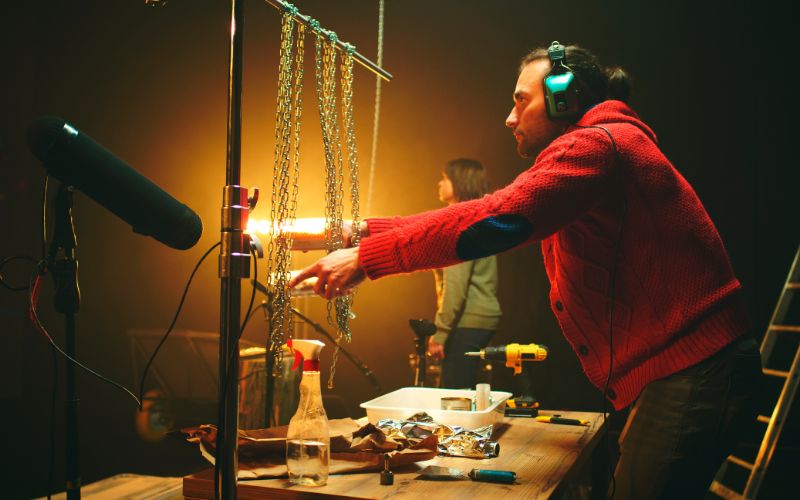
Audiobooks have revolutionized the way we consume literature, providing a convenient and immersive alternative to traditional reading. While narration is a fundamental aspect of audiobooks, sound design plays a crucial role in enhancing the overall listening experience. In collaboration with Canarit Audiobooks, a renowned audiobook production company, we delve into the world of audiobook sound design, exploring its importance, techniques, and the impact it has on listeners.
The Importance of Sound Design in Audiobooks
Sound design elevates the storytelling process in audiobooks by adding depth, atmosphere, and emotional impact. It allows listeners to connect with the narrative on a profound level, bringing the story to life through carefully crafted sounds. From the footsteps of a character to the ambiance of a bustling city or the dramatic music during a climactic moment, sound design contributes to the overall immersion and engagement of the audience.
Creating a Sound Design Plan
Before diving into the details of sound design, it is crucial to create a comprehensive sound design plan. This plan involves selecting the right sound effects, choosing appropriate background music, and utilizing ambient noise strategically. By developing a sound design plan, the audiobook production team ensures coherence and consistency throughout the entire listening experience.
Selecting the Right Sound Effects
The selection of sound effects is a critical aspect of sound design. Each sound effect must align with the narrative and enhance the listener’s imagination. Whether it’s the rustling of leaves, the creaking of a door, or the sound of rain, every effect is chosen thoughtfully to evoke the desired emotions and create a vivid auditory experience.
Choosing Appropriate Background Music
Background music plays a significant role in setting the mood and enhancing the overall atmosphere of an audiobook. The right choice of music complements the story, evokes specific emotions, and guides the listener through various scenes and transitions. Careful consideration is given to genre, tempo, and tone to ensure a seamless integration with the narration.
Utilizing Ambient Noise
Ambient noise, such as the sounds of nature or the bustling of a city, adds a layer of realism to the audiobook. By incorporating ambient noise strategically, sound designers can create a sense of place and transport listeners to different environments within the story. This technique enhances the immersion and makes the listening experience more vivid and engaging.

The Six Elements of Sound Design
In sound design, there are six essential elements that contribute to the overall quality and effectiveness of the audio production:
- Dialogue: The clarity and intelligibility of the spoken words are crucial for a successful audiobook. Sound designers ensure that the dialogue is clear, well-balanced, and seamlessly integrated with the accompanying soundscape.
- Sound Effects: Sound effects create aural cues that help the listener visualize and imagine the story. Whether it’s footsteps, door slams, or explosions, sound designers meticulously select and place the right effects to enhance the narrative.
- Music: Background music sets the tone, mood, and emotional context of the audiobook. It adds depth and enhances the listener’s emotional connection to the story. Sound designers work closely with composers and music libraries to find the perfect musical pieces for each scene.
- Ambiance: Ambient sounds create the sonic environment in which the story unfolds. They add depth, texture, and realism to the listening experience. Sound designers carefully choose and blend ambient sounds to create a believable and immersive world.
- Foley: Foley refers to the reproduction of everyday sounds, such as footsteps, clothing rustles, or object interactions. Foley artists use various props and surfaces to recreate these sounds, ensuring they match the actions and movements of the characters in the audiobook.
- Mixing and Mastering: The final stage of sound design involves mixing and mastering the audio tracks to achieve a balanced and cohesive sound. Sound designers adjust volume levels, EQ settings, and spatial positioning to create an optimal listening experience across different devices and environments.
Sound Design in Audio Production: A Closer Look
Sound design is a multidimensional process within the broader field of audio production. It encompasses the art and technical expertise required to create immersive soundscapes for various media formats, including audiobooks. Sound designers collaborate with narrators, authors, and production teams to enhance the storytelling experience through meticulously crafted sound elements.
Technical Considerations for Audiobook Sound Design
To ensure high-quality audiobook sound design, several technical considerations come into play. These considerations include:
Recording Equipment and Software
Professional-grade recording equipment and software are essential for capturing clear and pristine audio. This includes microphones, audio interfaces, and digital audio workstations (DAWs) that allow sound designers to record, edit, and manipulate audio files.
Sound Editing and Mixing Techniques
Sound designers utilize various editing and mixing techniques to shape the audio elements and create a cohesive soundscape. This involves removing unwanted noise, adjusting volume levels, applying equalization and effects, and fine-tuning the overall balance and dynamics of the audio tracks.
File Formats and Delivery Options
Audiobooks are distributed in different formats to accommodate various devices and platforms. Sound designers must be knowledgeable about the specific file formats and delivery options required by audiobook publishers and distributors.
Canarit Audiobooks: A Leading Audiobook Production Company
Canarit Audiobooks is a prominent audiobook production company dedicated to delivering top-notch audiobook experiences. With a focus on exceptional sound design, Canarit Audiobooks collaborates with talented sound designers, narrators, and authors to create immersive and captivating listening experiences that transport audiences into the heart of each story.
The Role of Sound Designers in Audiobook Production
Sound designers play a crucial role in audiobook production, working closely with authors, narrators, and production teams to bring stories to life through sound. They collaborate to ensure the sound design aligns with the tone and style of the audiobook while maintaining consistency and quality throughout the production process.
Conclusion
Audiobook sound design has revolutionized the way we experience literature, elevating the listening experience to new heights. Through a meticulous selection of sound effects, strategic use of background music, and careful attention to ambient noise, sound designers create immersive soundscapes that captivate and engage listeners.
